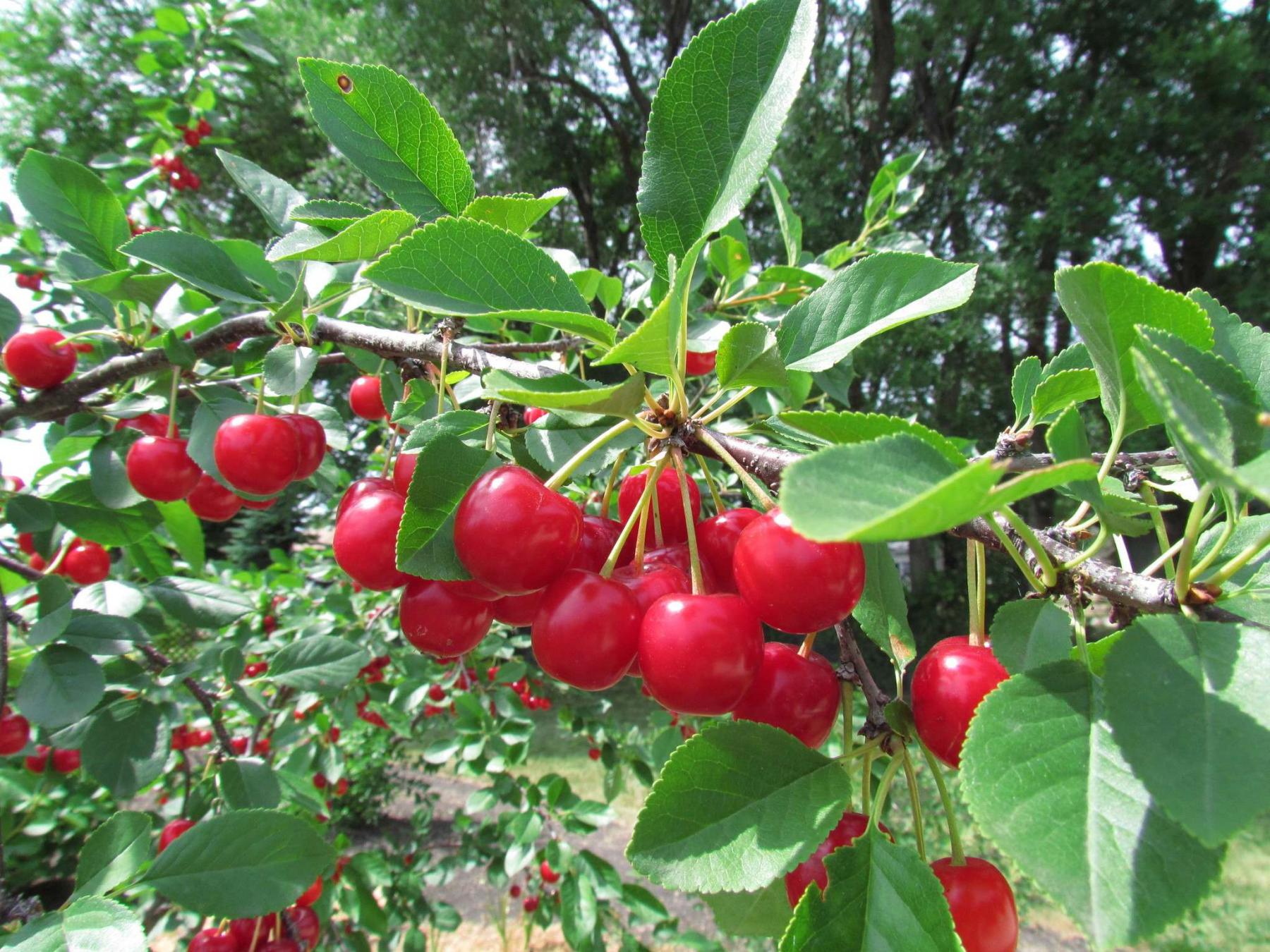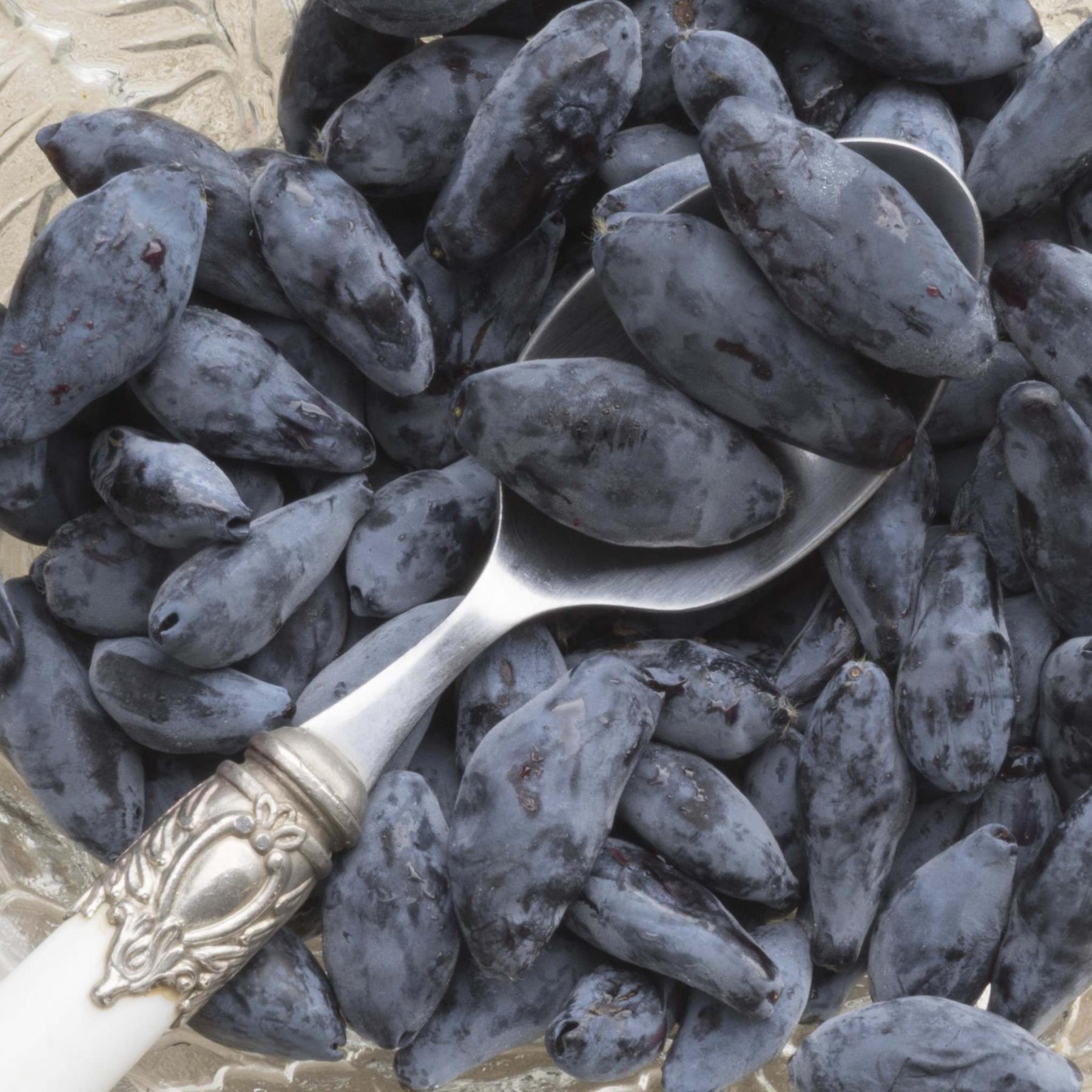
Bob Bors
Super nutritious Boreal Blizzard may be the world’s largest haskap variety.
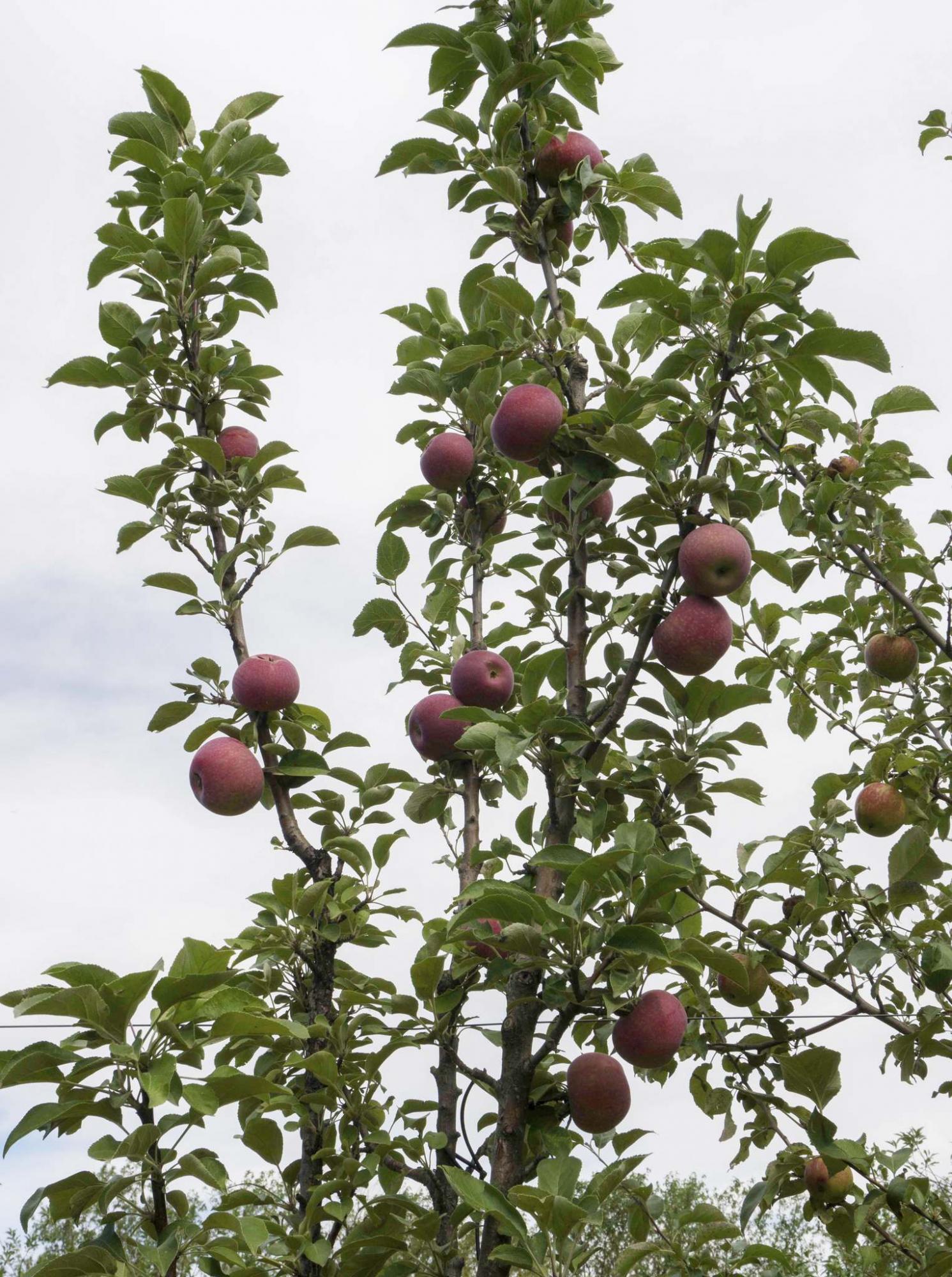
Bob Bors
No room to grow an apple tree? TreasuRed is a dwarf tree with large apples.
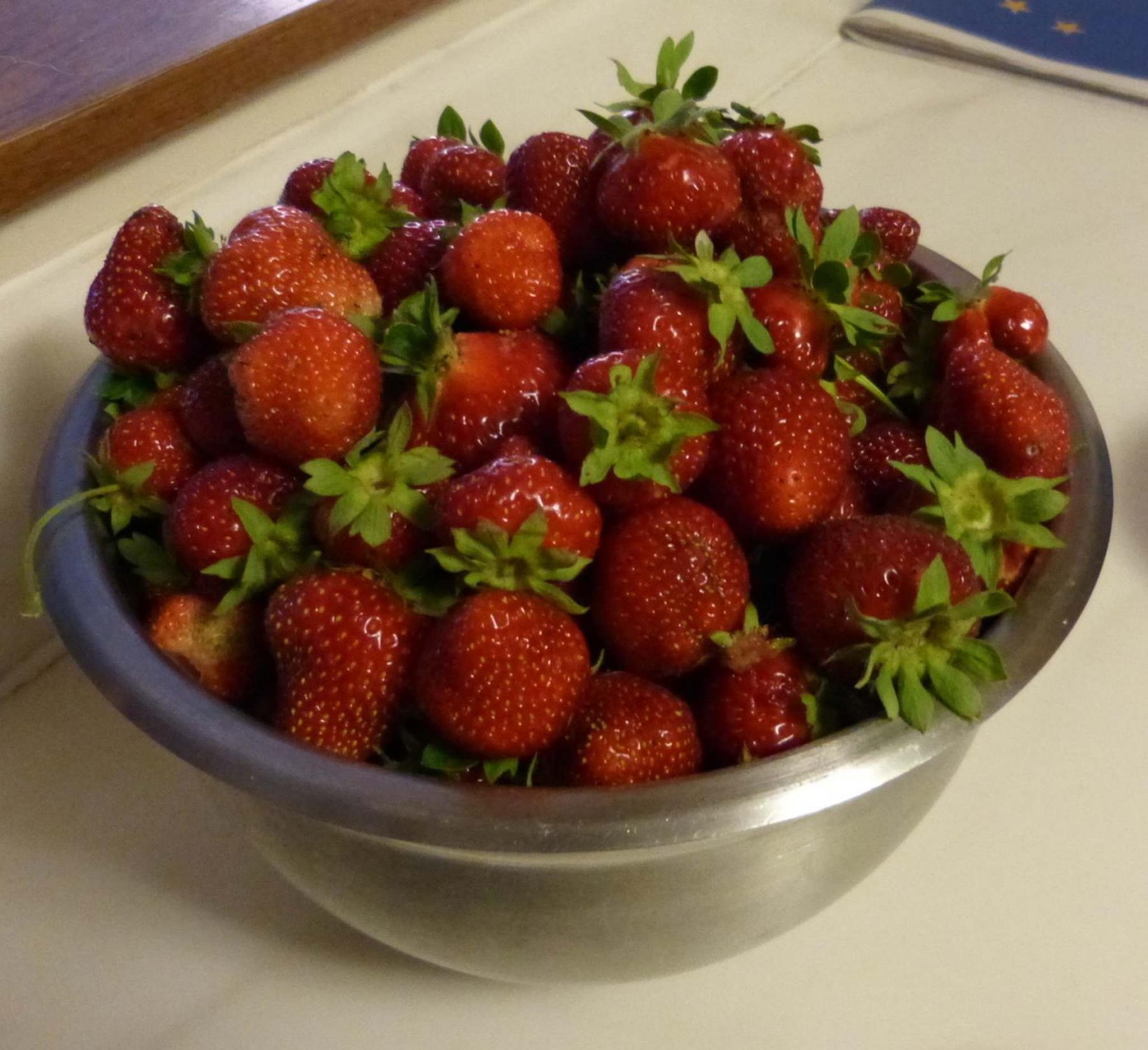
Sara Williams
Seascape is a day neutral strawberry that produces high yields.
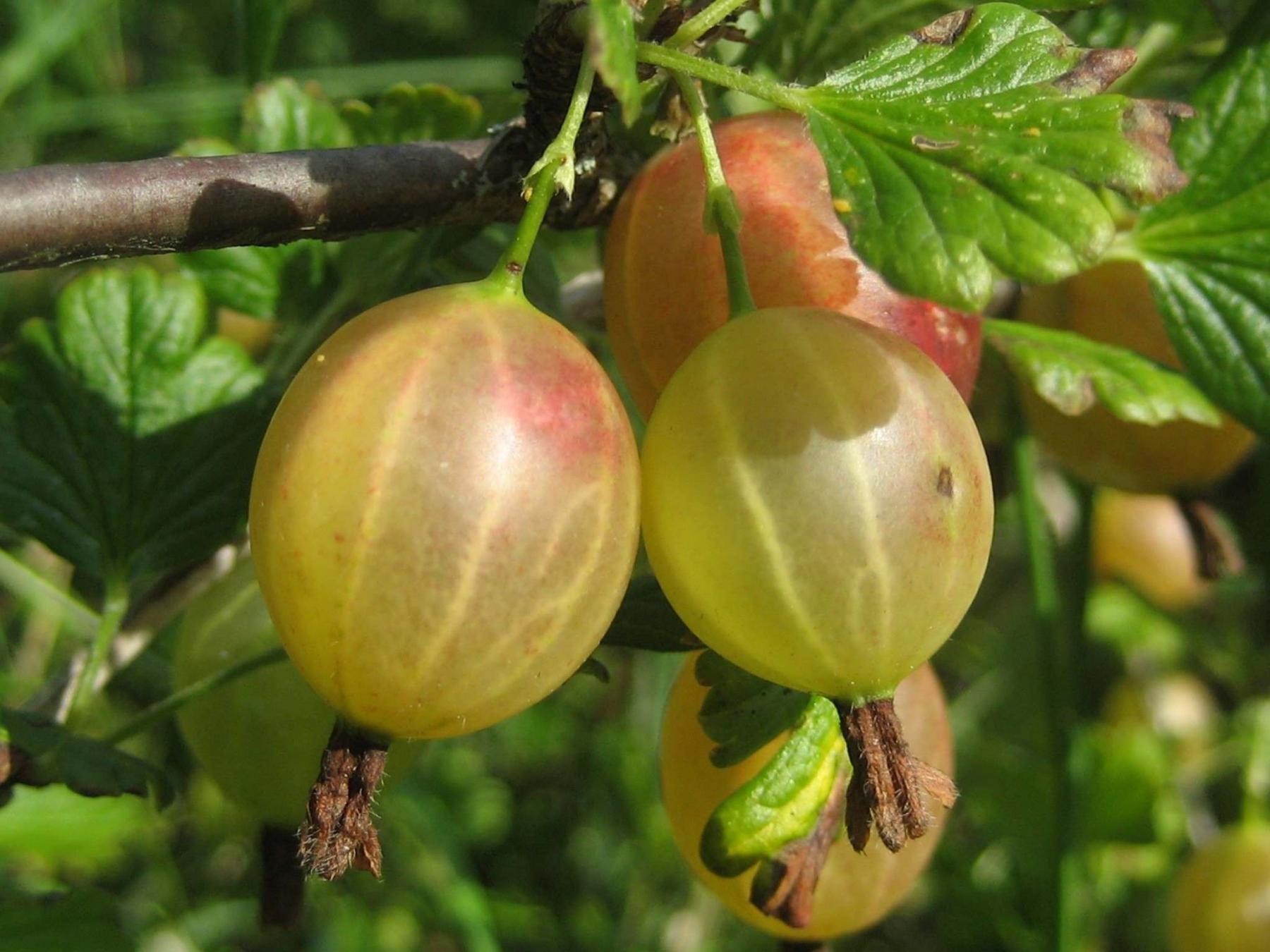
Prairie Gardens
Tolerant of part-shade, Easy Pickings gooseberry is nearly thornless.
As you have probably noticed, trees are in huge demand and short in supply. The strongest demand is for fruit trees. Shrub fruits — haskap, sour cherry, currant, and gooseberry, to name a few — as well as raspberry and strawberry plants, have also been flying out the doors of local garden centres. As much as the pandemic spurred the interest of many people stuck at home to grow their own food, growing fruit has been a trending story for several years.
The best place to buy fruit plants is at a reputable nursery or garden centre where knowledgeable staff can answer your questions about hardiness, planting practices, site selection, care and maintenance, irrigation, mulch, pruning, and pollination requirements. That last one — pollination requirements for fruit plants — is a big one. Do you need a second tree of the same species to ensure cross-pollination for fruit production? Yes, but the second tree needs to be a different cultivar in relative proximity. Will your neighbour’s crab apple tree be sufficient to provide the transfer of pollen to your apple tree? Yes, so long as the bloom periods overlap.
Bob Bors and Sara Williams are the authors of Growing Fruit in Northern Gardens (Coteau Books, 2017). A complete guide to growing your own fruit, this readable book draws on Bors and Williams’ tremendous expertise and provides all the information you need to successfully grow your own fruit garden. Bors is the head of the fruit breeding program at the University of Saskatchewan. Williams is the author of several books for cold climate gardeners and retired as the horticultural specialist, extension division, at the University of Saskatchewan.
"Apples very seldom present a pollination issue," said Williams in a recent phone conversation, "because all of the crab apple cultivars will pollinate all of the apple cultivars." Apples are a self-incompatible fruit so cannot be fertilized with their own pollen but because crab apples are a different cultivar that is within the same species as apples, the crab apple can serve as a pollinizer. If one of the neighbours on your block has a crab apple tree, that should be close enough to do the job. "If you live in a rural area and have the only apple tree for miles around, then you should have two different apple varieties for cross-pollination," said Williams.
Bloom periods may not overlap if one of the fruit varieties is in full sun and the other is in a shadier location which results in the soil taking longer to warm up in spring causing the blooms to be delayed by one, two, or a few days. It also must be bee-flying weather, said Williams. This spring, both Saskatoon and Winnipeg experienced strong winds with gusts up to 60 km/h or more. "No bee worth its buzz wants to be flying around in that weather," said Williams.
TreasuRed columnar apple tree is a compact introduction from the University of Saskatchewan. With a tree width of only 1 to 1.2 metres and mature height of 4 metres, TreasuRed is ideal for small gardens and is the first columnar apple hardy for zone 2 (extreme minimum temperature – 50 C.) The fruit is formed on short spurs that develop along the main trunk. While the overall size is compact, said Williams, TreasuRed produces full size fruit that resemble the McIntosh apple. "The advantage of a dwarf tree is that it is the rootstock that causes the dwarfing, and it takes up less space, making it much easier to harvest and prune," said Williams. That said, the root system is also smaller so if the dwarf tree has an extremely heavy load of fruit, it is beneficial to have the tree staked.
Pears require another compatible variety for fruit set but also, pears require a lot of space. Plums are the most complicated. Bloom periods of another compatible plum cultivar must overlap; however, Japanese hybrids bloom earlier than Canada and American plums.
There are numerous shrub fruits to choose from. Among them is haskap, a highly nutritious berry with a unique elongated shape. Haskap plants require compatible varieties for cross-pollination. Choose varieties that bloom at the same time. The University of Saskatchewan has the largest haskap breeding program in the world. Bors has introduced several varieties including early and mid-season ripening varieties such as Aurora, Borealis, Honey Bee, Tundra, and the Indigo series as well as late ripening varieties such as Boreal Beast, Boreal Beauty, and Boreal Blizzard which is one of the largest berries.
"Our breeding program has made haskap berries two or three times larger as well as sweeter," says Bors. "We have also bred our varieties to be resistant to powdery mildew which is very common in the oldest varieties." Haskap plants have exceptional winter hardiness. "We usually don’t have any winter damage on haskap," says Bors. That was true last February when temperatures in Saskatoon dipped to nearly – 50 C.
The dwarf sour cherries bred at the University of Saskatchewan are another game changer for home gardeners. There are both tree varieties and bush varieties to choose from, all with good flavour and cold hardiness but also distinctly different characteristics. Cupid, for example, has the largest fruit size of the dwarf sour cherries and is excellent for dipping in chocolate. But if you want a variety for drying, choose Valentine which is also the only dwarf sour cherry with bright red fruit. Self-compatible, sour cherries do not need pollen from another variety. A new Musketeer series will soon be released by the University of Saskatchewan. "D’Artagnan is more like a shrub and is really good for mechanical harvesting," says Bors.
Self-pollinating fruit plants include blueberries, currants, gooseberries, grapes, raspberries, Saskatoons, and strawberries. Blueberries are acid-loving plants whereas the fertile soils in Winnipeg and surrounding areas are primarily heavy clay and alkaline. Strawberries prefer a well-drained, sandy loam soil. Williams highly recommends Seascape strawberry plant, a very productive day-neutral variety with large, firm fruit. During the growing season, Williams applies a 10 cm mulch of weed-free straw around her strawberry plants to keep the roots cooler, allow good water percolation, and maintain soil moisture.
Currants and gooseberries (Ribes spp.) are long-lived shrubs with a preference for clay soil with a high organic matter content. As well, they are among the few fruits that do well in partly shady conditions without compromising yields. A variety to look for is Easy Pickings, a nearly thornless gooseberry with a mature height of about 1.5 metres. Easy Pickings, an introduction by Boughen’s Nursery in Valley River, one of Manitoba’s pioneer nurseries, is self-pollinated; however, the fruit set is improved with a pollinizer cultivar.
Site selection is one of the most important criteria for growing fruit successfully, says Williams. Choose a well-drained site, generously amended with organic matter, that receives full sun for at least half the day. If it is possible, says Williams, try to locate your fruit plants in a protected location where they are not going to be blasted by wind.
Growing Fruit in Northern Gardens, now in its second printing, is available at McNally Robinson.
colleenizacharias@gmail.com

